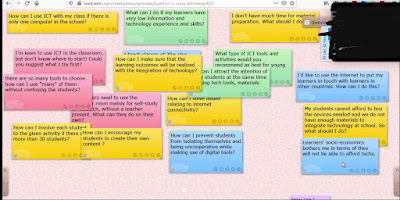Reflection on 7th Week of Teacher Training Program
Hello darlings! How have you been? As you know, we have finished the first module of our training program. The theory part is over and now it is time to create a website and apply what we have learned. We had several meetings with our group members this week. Firstly, we decided on our main topic for the website easily. We were just not sure about our implication. We agreed on working on English as a Global Language since all of us were interested in this topic and it was one of the main issues we focused on during the training program. It’s a contemporary topic and it indicates the main features of English in 21st century that’s why wanted to extend our knowledge and work on it. We will present our topic from general to specific. So, English as a Global Language is our umbrella term. We will search the ELT practices all over the world and in Turkey context. We will explain Standard English and the effects of teaching standard English both all over the world and in Turkey. ...

